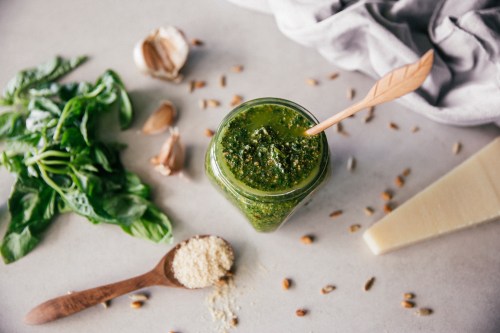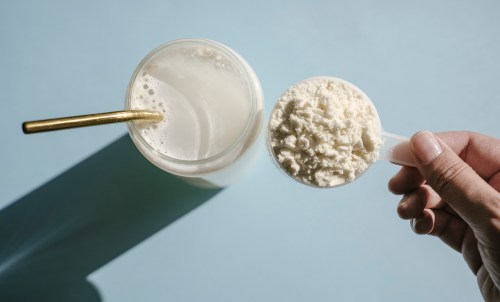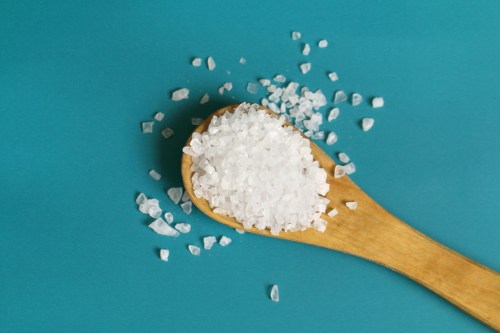Fact: there is no such thing as too much basil. Easily one of the most versatile herbs in your garden, the mighty basil plant is a staple in cuisines around the world. You can stir-fry it with eggplant for a Chinese classic, simmer it with red chiles and coconut milk for a deliciously comforting Thai curry, or blend basil with tomatoes and cream for everyone’s favorite accompaniment to a grilled cheese sandwich. But of all the many ways to utilize basil in your cooking (or drinking), there is one recipe that reigns supreme: pesto.
How to make basil pesto
Let’s start with the basics of making pesto at home. One of the easiest ways to use up your bountiful crop of basil, a batch of pesto is bursting with the fresh flavors of spring and early summer. The sauce is most vibrant when your basil is in its high season, which traditionally means the month of June.
Most recipes are relatively straightforward and require just a few ingredients. In addition to basil, you’ll need pine nuts, parmesan cheese (nutritional yeast works well as a plant-based swap), a generous drizzle of olive oil, plus salt and pepper to taste. You can toss in additional herb varieties and zhuzh with other ingredients, but purists have found that fewer inputs often make for a richer, more robust-tasting output. (Pro tip: for the creamiest, thickest pesto, pound the ingredients with a mortar and pestle. If you’d like to enlist less elbow grease, outsource the job to a food processor or blender.)
How to freeze pesto
Once you’ve made your first batch of pesto and discovered that it is infinitely more delicious than the store-bought variety and surprisingly easy to master, you’re undoubtedly going to want to stockpile enough pesto for your entire hibernating season. It’s a tricky task to navigate—after all, much of pesto’s lure comes from the bright, herbal zing of freshly-picked basil.
If you have a small amount leftover, you can keep pesto in the fridge for up to three days, making sure to cover it with a layer of olive oil to avoid the surface of the sauce from oxidizing and turning brown. But for longer-term storage, there is one smart, surprising kitchen tool you can call upon to maintain the fresh flavor and creamy texture of your pesto for months on end: an ice cube tray (and your freezer).
Sure, we’ve all heard of freezing pasta sauces, but the freezing process always seems to work better in theory than in practice. A plastic bag doesn’t quite do the trick, as it more often than not results in large chunks of frozen mush that are decidedly difficult to portion out. And don’t even try freezing it right in the jar or storage container; those who have made this misstep and ended up with a freezer filled with broken glass know why.
Enter the ice cube tray. This tool—especially one made from silicone that allows you to easily pop out the frozen cubes—helps you create perfect single-serve portions of your favorite pasta sauce. Simply scoop your leftover (or made-for-the-freezer) pesto into each compartment of your ice cube tray, scrape off the excess for more even freezing, and let the appliance work its magic. Once fully frozen, you can pop those little bite-sized flavor bombs out of the ice cube tray and into a freezer-safe bag or container. And that’s it—you’ll be just one quick thaw away from fresh pesto for months to come.
How to thaw your pesto cubes
The beautiful thing about frozen cubes of pesto rather than frozen bags or containers is the serving size. Whether you’re craving just enough pesto for a single bowl or pasta or are making pesto eggs for your sizable Sunday brunch, you can grab a cube (or two or ten) and easily control the flavor profile of your finished dish.
Freezing pesto in smaller portions helps speed up the defrosting process, which means that as you’re cooking, you can actually just toss the frozen cubes directly into the pan with your main ingredients. For example, if you’re making a pesto chicken, you can add your pesto cubes as you brown your protein. If you’re not making a composed dish with your pesto, you can either microwave your cubes for about 30 seconds at a time, or use my preferred method: place the pesto in a plastic bag, and submerge it in hot water for a few minutes. This slower, more gentle defrosting process is perfect for creating an evenly creamy pesto spread.
Where to use your pesto cubes
If you’re following the pesto egg craze, trust us when we say that throwing a cube of pesto and a few eggs into a skillet is one of the easiest and most satisfying meals you can make for any time of the day. While pesto pasta is an obvious use case, consider branching out with your carbs—pesto on a panini is fabulous, as is pesto pizza. You can also use pesto as a base for various meat and fish dishes, such as baked salmon or grilled halibut.
And you can even turn frozen pesto into yet another sauce. For instance, consider adding some pesto to your hummus, or even making a flavored butter with just a hint of that green goodness.
No matter how you to decide to utilize your frozen pesto, rest assured that it will be just as satisfying as the day you made it. So keep on planting that basil and making it into pesto. You’ll never have to worry about having “too much” on hand ever again.
Join Well+Good’s Cook with Us Facebook group for more healthy food and drink ideas.
Sign Up for Our Daily Newsletter
Get all the latest in wellness, trends, food, fitness, beauty, and more delivered right to your inbox.
Got it, you've been added to our email list.











